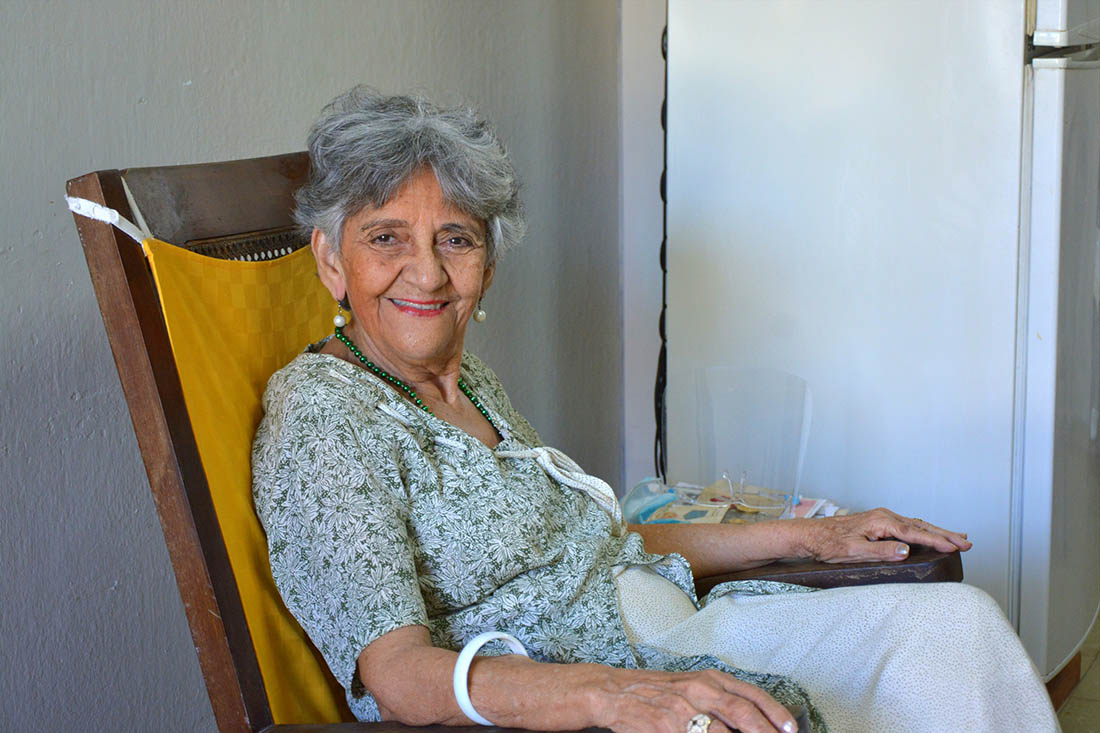“The first thing for a revolutionary must be selflessness, what he does must be out of love, otherwise he loses his value.” Thus, with that lesson for life, we began a conversation with the teacher of the Sierra: Luisa Álvarez Borges.
This restless revolutionary has many stories that she fondly treasures, but without a doubt, the ones that make her most proud are those related to the volunteer teachers of the Sierra Maestra, where she was part of the first contingent, whom Fidel called in 1960, in addition to being a founder of the Militias and the Feminine Women’s Front, which later became the FMC.
About her work in the eastern mountains and the memories of Conrado Benítez, Luisa has a lot to tell, that is why with her very clear memories we meet in the living room of her apartment located in Templador Alley, where photographs, medals and distinctions tell her story.
The beginning
 She always has been a very attractive woman, the images speak of the beauty and at the same time the seriousness of that 18-year-old girl, who climbed the Sierra to help banish the ignorance of those humble people loyal to the Revolution.
She always has been a very attractive woman, the images speak of the beauty and at the same time the seriousness of that 18-year-old girl, who climbed the Sierra to help banish the ignorance of those humble people loyal to the Revolution.
She proudly comments that all the militiamen of her battalion, created in the Teachers’ Normal School, went to teach literacy in the Sierra. Conrado Benítez and his brother were up there, but Conrado was transferred several times and he was murdered near the Escambray, an unfortunate fact because he had a very noble and fair heart, he did not deserve to die, she says with pain.
Startles
 Luisa was in Palma Mocha as a teacher when they tried to kill her, but the farmers in the area warned her and after three days of walking, she arrived at Zagua de Tánamo, where she stayed until she finished her mission.
Luisa was in Palma Mocha as a teacher when they tried to kill her, but the farmers in the area warned her and after three days of walking, she arrived at Zagua de Tánamo, where she stayed until she finished her mission.
Other shocks and persecutions threatened her life later. Thus, on a normal school day, an officer insistently chased her for an alleged interview… she was with her students on the way to the classroom and although she was tense, she did not show the children anything, she thought to herself: if I die here, I will die for my homeland so I will keep living.
She told him that she was with the students and that she could not receive him and it seems that the subject left, tired of her slights. New scares appeared during that stage as a volunteer teacher in the Sierra; however those days of the nascent Revolution were for her the most beautiful of her life.
A note to Fidel
With the look of a mischievous girl, Luisa’s face lights up, she rejuvenates and returns to July 1959, to tell me about a note she sent to Fidel.
The note said: We did as you did, we entered and we triumphed, the reason was that after several days of walking, upon reaching the place where the Commander in Chief would speak from the Sierra, to celebrate the first July 26th after the triumph, the Security wouldn’t let her get close.
Then the stubborn militiawoman, with her brigade, advanced towards him, who, to the surprise and the commotion… with the note in her hand, only responded with a smile, to approve that they stay.
Whether it was in Palma Mocha, Zagua de Tánamo, or in its many other classrooms, Luisa’s imprint and her dedication to the Revolution together with women’s and union organizations, have given this woman from Camagüey the well-deserved nickname by which everyone knows her.: The Teacher of the Sierra.
Translated by: Aileen Álvarez García








